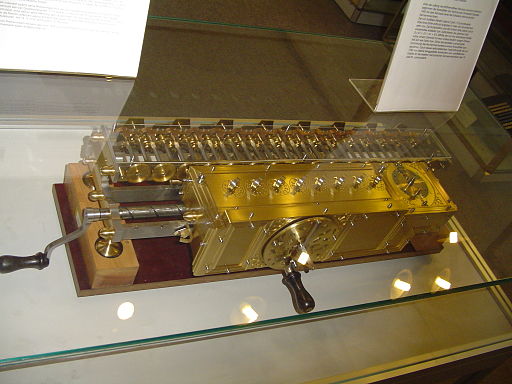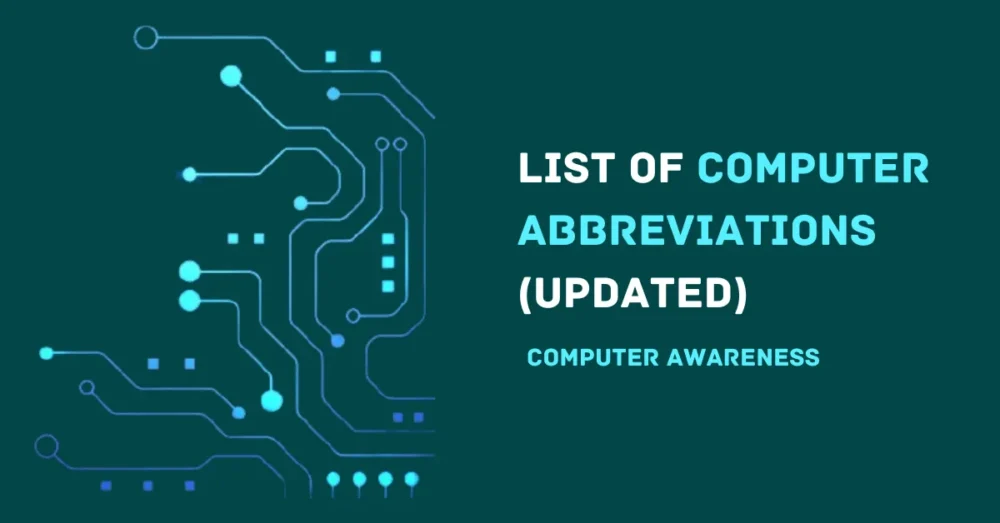In this post, we embark on an enthralling expedition through time, delving into the captivating history of computer invention. From its humble beginnings as a mere concept to the revolutionary breakthroughs that paved the way for the modern technological era, we will uncover the remarkable minds and pivotal moments that shaped the very essence of computing.
In today’s fast-paced digital world, computers have become an integral part of our lives. From the smart laptops we use for work and leisure to the powerful smartphones we carry in our pockets, these ingenious devices have revolutionized how we communicate, work, and even think. But have you ever wondered about the remarkable journey that led to the creation of these complex machines?
Join us as we explore the ingenuity, determination, and ingenuity that brought the “History of Computer Invention” into existence, forever altering the course of human civilization. Let’s dive into the intriguing tale of how these remarkable machines evolved from early innovations to the marvels we know and rely on today.
Also See: All Computer Awareness Notes Covered by Gkbooks
From Abacus to PCs: A Comprehensive History of Computer Invention
Throughout history, humans have devised various counting and computing devices to aid their calculations and problem-solving. These devices have evolved, becoming more sophisticated with advancements in human knowledge and technology. Let’s explore a brief overview of some notable computing devices, starting from the earliest known ones to the more recent innovations:
Primitive Counting Tools
▪ In ancient times, primitive humans used simple objects like sticks, stones, and bones as counting tools. By arranging and manipulating these objects, they could keep track of quantities and perform basic calculations.
Abacus
▪ The abacus, also known as a counting frame, has been used since ancient times. Before adopting the Hindu-Arabic numeral system, it was utilized in the ancient Near East, Europe, China, and Russia. The exact origin of the abacus is still uncertain.
▪ It consists of rows of movable beads or objects representing digits, arranged on a wire. Beads are manipulated to perform various operations, such as addition, square, or cubic roots.
▪ Early abacus designs had loose beads on a flat surface or sliding in grooves, while later designs incorporated sliding beads on rods within a frame for faster manipulation.
▪ Abacuses are still produced, often using bamboo frames with beads sliding on wires. Before the introduction of positional notation, abacuses were a practical calculating tool in the ancient world.

▪ Abacuses are still used to teach mathematics fundamentals to children in many countries. Different abacus designs support multiple calculation methods, including addition, subtraction, multiplication, division, and square and cube roots.
▪ Some methods even accommodate non-natural numbers. While calculators and computers have largely replaced abacuses, they are still used by merchants, traders, clerks, and individuals with visual impairments in certain countries.
▪ Abacuses are also used as scoring systems in non-electronic table games.
Napier’s Bones
▪ Napier’s Bones are a calculating device invented by John Napier in 1617. They comprise 10 rods, each with a different multiplication table engraved.
▪ The rods are placed next to each other, and the product of two numbers can be found by adding the corresponding numbers on the rods.
▪ Napier’s bones significantly improved over previous calculating devices like the abacus. They were faster and more accurate and could be used to perform more complex calculations.
▪ scientists and mathematicians used Napier’s bones for centuries; some businesses even used them until the early 20th century.
Slide Rule
▪ The Slide Rule, a mechanical calculating device, was initially developed by an English mathematician, Edmund Gunter in the 16th century.
▪ This innovative tool allowed users to perform essential mathematical operations such as addition, subtraction, multiplication, and division.
▪ It consisted of two logarithmic scales that could slide against each other, enabling precise calculations.
▪ The Slide Rule gained popularity and widespread use over the centuries and remained an essential tool for scientists, engineers, and mathematicians until the late 1970s.
▪ Its simplicity, efficiency, and portability made it an invaluable asset for complex calculations, particularly in fields such as physics, engineering, and astronomy.
▪ One of the significant advantages of the Slide Rule was its ability to perform computations involving logarithms, which simplified complex mathematical operations.
▪ It provided a practical and accessible means of conducting calculations without requiring extensive manual calculations or reference to logarithmic tables.
Pascaline
▪ Pascal’s calculator, also known as the Pascaline, was a mechanical calculator invented by Blaise Pascal in 1642.
▪ Pascal was inspired to create the calculator due to the laborious arithmetic calculations required for his father’s work as a tax supervisor.
▪ The calculator could perform direct addition and subtraction, as well as multiplication and division through repeated addition or subtraction.
▪ One notable innovation of Pascal’s calculator was its carry mechanism, which allowed for rapid cascading of carries from one digit to another, making each digit independent of the others.
▪ Pascal adapted and shrunk lantern gear for his calculator, commonly used in turret clocks and water wheels. This adaptation reduced operator input strength while maintaining low friction.
▪ After 50 prototypes, Pascal presented his calculator to the public in 1645 and dedicated it to Pierre Séguier, the chancellor of France at the time. Over the following decade, Pascal built twenty more machines, further improving the original design.
▪ In 1649, King Louis XIV granted Pascal a royal privilege, granting him exclusive rights to design and manufacture calculating machines in France.
▪ Presently, there are nine surviving Pascal calculators, with most of them on display in European museums. Pascal’s invention influenced subsequent calculators, with Gottfried Leibniz inventing his Leibniz wheels after 1671, which were inspired by Pascal’s work.
▪ In 1820, Thomas de Colmar designed the arithmometer, a mechanical calculator that was strong and reliable enough for daily office use. It is unclear if de Colmar had seen Leibniz’s device, but he either reinvented it or utilized Leibniz’s step drum invention.
Stepped Reckoner or Leibnitz wheel
▪ The stepped reckoner, also known as the Leibniz calculator, was a mechanical calculator invented by the German mathematician Gottfried Wilhelm Leibniz around 1672 and completed in 1694.
▪ It was the first calculator to perform all four arithmetic operations: addition, subtraction, multiplication, and division.
▪ The name “stepped reckoner” comes from the translation of the German term “Staffelwalze,” referring to its operating mechanism known as the “stepped drum.”

▪ Two prototypes of the stepped reckoner were built, but today, only one survives, housed in the National Library of Lower Saxony in Hanover, Germany.
▪ Replicas of the calculator can be seen on display in various places, including the Deutsches Museum in Munich. Despite its mechanical flaws, the stepped reckoner inspired future calculator builders by demonstrating the potential of such devices.
▪ The operating mechanism invented by Leibniz, called the stepped cylinder or Leibniz wheel, was utilized in calculating machines for over 200 years and continued to be used in the Curta hand calculator until the 1970s.
Punch Card System
▪ The Punch Card System was developed by Jacquard in 1801 to control the power loom.
▪ Jacquard invented the punched card reader, which recognized the presence of a hole as a binary one and the absence of a hole as a binary zero.
▪ Punched cards were pieces of stiff paper that held digital data represented by holes in predefined positions. They were widely used in data processing applications and to control automated machinery.
▪ Punched cards played a significant role in the data processing industry throughout the 20th century. Unit record machines, part of semiautomatic data processing systems, used punched cards for data input, output, and storage.
▪ The IBM 12-row/80-column punched card format became the industry standard.
▪ Punched cards were the primary medium for inputting computer programs and data in early digital computers. Although punched cards are now obsolete as a storage medium, as of 2012, some voting machines still used them to record votes.
▪ Punched cards had a significant cultural impact and were an important milestone in the development of modern digital computers.
Difference Engine/Mechanical Calculators
▪ The difference engine is an automatic mechanical calculator designed by Charles Babbage in the 1820s. Its purpose was to tabulate polynomial functions, which are mathematical functions commonly used in engineering, science, and navigation.
▪ The name “difference engine” originates from the method of divided differences, which involves using a small set of polynomial coefficients to interpolate or tabulate functions.
▪ The difference engine could compute tables of numbers that approximated logarithmic and trigonometric functions, which are fundamental in various fields of study.
▪ Charles Babbage envisioned the difference engine as a way to automate and expedite the process of generating accurate and reliable mathematical tables.
▪ The different engines utilized gears, levers, and other mechanical components to perform calculations mechanically without requiring manual computation.
▪ Babbage’s design for the difference engine was groundbreaking for its time, showcasing the potential for complex mechanical devices to carry out mathematical computations.
▪ The construction of the full-scale working version of the difference engine was not completed during Babbage’s lifetime due to various challenges, including funding and technical difficulties.
▪ Despite the incomplete realization of the difference engine, Babbage’s work laid the foundation for modern computer design and is considered a precursor to the concept of a programmable computer.
▪ Recently, enthusiasts and engineers have reconstructed Babbage’s different engines based on his original designs, demonstrating their functionality and historical significance.
Analytical Engine
▪ The analytical engine was a mechanical general-purpose computer designed by Charles Babbage, an English mathematician and computer pioneer.
▪ It was first proposed in 1837 as the successor to Babbage’s earlier design, the difference engine, a simpler mechanical calculator.
▪ The analytical engine was designed to incorporate key components of modern computers, including an arithmetic logic unit, control flow with conditional branching and loops, and integrated memory.
▪ This design made the analytical engine the first concept for a general-purpose computer that could be considered Turing-complete, meaning it could solve any problem a modern computer can solve.
▪ The structure and principles of the analytical engine closely resemble those of computer designs that would dominate the electronic era.
▪ Although Charles Babbage was unable to complete the construction of any of his machines, including the analytical engine, due to conflicts with his chief engineer and insufficient funding, his work was groundbreaking for computer science.
▪ The analytical engine is considered one of Babbage’s most significant achievements and a pivotal contribution to the development of computing technology.
▪ It wasn’t until 1941, over a century after Babbage proposed the analytical engine in 1837, that Konrad Zuse built the first functional general-purpose computer, the Z3.
▪ Babbage’s analytical engine laid the conceptual groundwork for future generations of computers and has become an important milestone in the history of computing.
Tabulating Machine
▪ Herman Hollerith, an American statistician, invented the Punched Card Tabulating Machine in 1890. Based on punch cards, this mechanical tabulator could electronically read and process information from the punched cards. It was utilized for tabulating statistics, recording data, and sorting information.
▪ The machine played a significant role in the 1890 U.S. Census. Hollerith’s invention led him to establish Hollerith’s Tabulating Machine Company, which eventually became the renowned International Business Machines (IBM) in 1924. The developments discussed, along with other advancements not mentioned, culminated in the creating of the first computer in the 1940s.
Differential Analyzer
▪ The first electronic computer introduced in the United States in 1930 was an analogue device invented by Vannevar Bush. This groundbreaking machine utilized vacuum tubes to switch electrical signals and calculate. It boasted the impressive capability of performing 25 calculations in just a few minutes, marking a significant leap forward in computational speed and efficiency.
Electro-Mechanical Computers / Mark I
▪ The next significant advancements in computer history commenced in 1937 when Howard Aiken conceived the idea of creating a machine capable of handling complex calculations with large numbers.
▪ This vision came to fruition in 1944 with the development of the Mark I computer, a collaborative effort between IBM and Harvard University. The Mark I computer held the distinction of being the first programmable digital computer, paving the way for a new era of computing technology.
Vacuum Tube Computers
▪ Vacuum tube computers marked a significant advancement in computing technology. In the mid-20th century, these machines replaced the mechanical components with vacuum tubes, allowing faster and more reliable calculations. The ENIAC (Electronic Numerical Integrator and Computer) is a well-known example of a vacuum tube computer.

Transistor Computers
▪ The invention of the transistor in the late 1940s revolutionized computing. Transistor computers were smaller, more efficient, and more reliable than their vacuum tube predecessors. The introduction of transistors paved the way for developing mainframe computers and minicomputers.
Integrated Circuit Computers
▪ Integrated circuits, or microchips, became the building blocks of modern computing devices. They allowed for the miniaturization of electronic components, enabling the development of personal computers (PCs) and other portable devices. The Altair 8800 and the IBM Personal Computer (IBM PC) are examples of early integrated circuit-based computers.
Microprocessors and Personal Computers
▪ The invention of the microprocessor in the early 1970s brought about the era of powerful and affordable personal computers. Microprocessors, which combined the central processing unit (CPU) on a single chip, enabled the widespread use of computers for various applications, from business to personal use. Companies like Apple and Microsoft played significant roles in popularizing personal computers.
Key Landmarks in the History of Computer Invention
▪ Here are some key milestones in the history of computer invention along with their corresponding years:
☛ 1822: Charles Babbage conceptualizes the Difference Engine.
☛ 1837: Charles Babbage designs the Analytical Engine.
☛ 1890: Herman Hollerith invents the Punched Card Tabulating Machine.
☛ 1936: Alan Turing introduces the concept of the Universal Turing Machine.
☛ 1937: Howard Aiken plans the development of a machine for large-scale calculations.
☛ 1944: IBM and Harvard collaborated to build the Mark I computer, the first programmable digital computer.
☛ 1946: ENIAC (Electronic Numerical Integrator and Computer), the first general-purpose electronic computer, is completed.
☛ 1951: UNIVAC I (Universal Automatic Computer), the first commercial computer, is unveiled.
☛ 1953: IBM introduced the IBM 650 Magnetic Drum Data Processing Machine, the first mass-produced computer.
☛ 1964: IBM releases the System/360, a family of mainframe computers, revolutionizing computer compatibility.
☛ 1971: Intel introduces the world’s first microprocessor, the Intel 4004.
☛ 1976: Steve Jobs and Steve Wozniak start Apple Computer Inc.
☛ 1981: IBM launched the IBM Personal Computer (IBM PC), setting the standard for personal computers.
☛ 1990: Tim Berners-Lee invents the World Wide Web.
☛ 2007: Apple introduces the iPhone, revolutionizing mobile computing.
☛ 2010: Apple releases the iPad, popularizing tablet computers.
Conclusion
The history of computer invention showcases a remarkable journey of human creativity and innovation. From the innovative concepts of pioneers like Charles Babbage and Ada Lovelace, who laid the groundwork for mechanical computation, to the groundbreaking advancements of John Atanasoff and Clifford Berry in electronic computing, each stage has played an integral role in shaping the modern world.
The development of the Analytical Engine marked a significant turning point, introducing the concept of a general-purpose computer with Turing-complete capabilities. This visionary creation served as a blueprint for future generations of computers and inspired the computer designs that dominate the electronic era.
While Charles Babbage’s ambitious projects, including the Analytical Engine, faced challenges and remained unrealized during his time, his enduring impact on computer science is undeniable. His work set the stage for Konrad Zuse’s groundbreaking Z3, the first functional general-purpose computer, and paved the way for the following technological marvels.
Frequently Asked Questions (FAQs)
The “fathers of the computer” in the history of computer invention are Charles Babbage, Ada Lovelace, Herman Hollerith, John Atanasoff, and Clifford Berry.
Charles Babbage introduced the concept of the first computer in the early 1800s, but the first electronic digital computer, ENIAC, was built in 1945.
The first computers were primarily used for scientific and mathematical calculations and military applications such as calculating ballistics tables.








